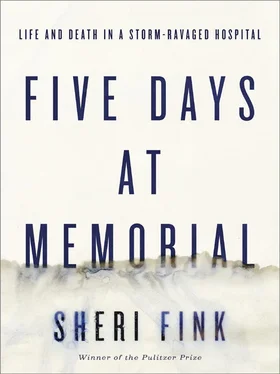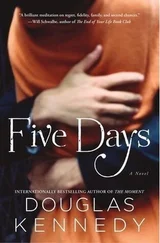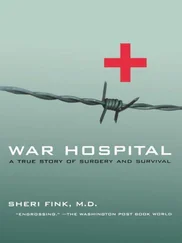The age of electrical invention afforded a comfortable convalescence as doctors applied new technologies to their increasingly science-based practices. Suppliers of newfangled appliances filled the Item-Tribune with advertisements celebrating their affiliation with Southern Baptist. The Acme X-Ray Sales Co. had equipped the hospital with a Precision Type Coronaless Roentgen Apparatus, “internationally recognized as the foremost X-Ray machine.” Barnes Electric Construction Co., Ltd., of Gravier Street, which had laid the hospital’s electrical and phone wiring, had also installed a call system incorporating musical gongs and silent luminescent indicators. All operating rooms had been equipped with compressed air and vacuum attachments. The hospital’s design included “ventilation methods productive of coolness in the summer” to shield patients from the Southern heat.
New Orleans Public Service Inc., NOPSI, a newly consolidated utility company, purchased a nearly full-page advertisement announcing it had installed Frigidaire electric refrigerators on every floor of Baptist. “If the hospital MUST have the protection of FRIGIDAIRE, surely the home, the store and the restaurant SHOULD have it.” To a city where many homes still had iceboxes, the refrigerators’ low, even temperatures were described as a form of health insurance, preventing food spoilage and “the incipient development of germ life.”
Baptist had its own power plant. A smokestack rose seven stories above it. Workers prepared to feed the hospital’s furnaces 20,000 gallons of oil per week.
Seven years earlier, city missionary Clementine Morgan Kelly had stood before congregants at a church meeting and announced the conclusion she had reached after years of “prayerful study, deep thinking, hard labor,” and visits to medical charity wards. “The crying need of the hour is a Baptist hospital for New Orleans,” she said. “We shall never convince New Orleans of the seriousness of our purpose to give this city Christ’s pure gospel, until we do missionary work through a Baptist hospital.” Baptists could open people’s hearts to Christ by engaging, as Christ did, in healing.
The Southern Baptist press spread Kelly’s idea to a receptive church already engaged in a hospital-building movement. New Orleanians of other religions supported the idea too. Almost eight hundred city dwellers donated money to purchase land for the new hospital.
The Saturday afternoon of the hospital’s dedication, superintendent Bristow, the champion who had brought Clementine Morgan Kelly’s dream to fruition, rose to speak. “The purpose of the Southern Baptist Hospital, in a single phrase, is to glorify God,” he said. Poor charity patients would have their own rooms like the wealthy instead of being placed in the ghettos of separate wards. “We do not wish to capitalize the sufferings of human beings, but to relieve them.” The hospital opened its doors to serve its stated, three-pronged mission: the alleviation of pain, the prolongation of life, and the relief of suffering.
The operation was not boundlessly munificent. To receive charity care, a poor family had to supply a letter from a church that testified to the family’s need and promised the hospital a donation. “We cannot undertake to help those whose own church declines aid,” Bristow wrote. The definition of charity cases was narrow at first, limited mainly to widows, orphans, and the elderly. A poor man whose wife required treatment would be given credit and a lecture about how charity would steal his dignity. Bristow often used the stories of charity patients, especially children, to fill pamphlets soliciting donations for Southern Baptist. He highlighted the important missionary work Southern Baptist Hospital was performing as it won converts and raised the profile of “white Baptists” in New Orleans, who were a minority in the city’s twenty-eight Baptist churches and whose Convention had a history of support for slavery, Jim Crow laws, and racial segregation.
The new hospital sat in one of the lower parts of a city that dipped below sea level like a basement below the water table. Runoff had to be caught, channeled, and pumped skyward to expel it into surrounding lakes.
Around the turn of the twentieth century, $15.3 million had been spent on drains, canals, and pumps to help transform the soggy, typhoid- and malaria-ridden basin between the Mississippi River and Lake Pontchartrain into a modern city. Since then, rapid development had paved over ground that had once absorbed rainfall, but when the hospital opened, the city hadn’t increased its pumping capacity in a decade.
The 11,700 densely populated acres in the uptown drainage section of the city that encircled Baptist were served by a single pumping station that lifted the water into a relief canal that channeled it to another pumping station, which raised the water high enough to flow into Lake Pontchartrain. An upgrade in the area’s pumping and canaling capacity had been envisioned to go along with the development, but while buildings went up, the work below ground lay undone. With no storms of great magnitude, the improvements had not been prioritized.
SUNDAY, MAY 2, 1926
THE UNSEASONABLY HOT weather was subsiding, and that pleasant afternoon some families set out for Heinemann Park to cheer for the New Orleans Pelicans batters as they took on Little Rock. Others laid out the suits, dresses, and hats they planned to wear to a show at one of the downtown theaters along Canal Street. Many thousands were expected to ride the streetcar to New Orleans’s giant public playground, City Park, for its annual opening fete. Sport exhibitions, musical performances, vaudeville acts, and movies packed the schedule. In the evening, festivalgoers would be invited within the Ionic columns of an open-air peristylium and dance for hours to the beat of the Hotsy Totsy Jazz Band. Above them, a grand exhibition of fireworks would paint the heavens with Chinese Spiders, Silver Comets, Turkish Crosses, Caskets of Jewels, Revolving Wheels, Large Waterfalls, and a bouquet of a hundred skyrockets.
Storm clouds began assailing the city just after three p.m. Uptown, where Southern Baptist Hospital had been open less than two months, raindrops knocked against the steep sides of tarred roofs and slapped onto newly laid pavement, gathering in rivulets that quickly joined streams. Thunder rattled windows. The temperature dropped nearly twenty degrees. During the first four hours of the storm, a gauge recorded a rainfall of nearly six inches, a record-setting pace. Debris-clogged catch basins blocked water from entering drainage canals. Streams in the streets grew to torrents. “It looked,” Realtor Harry Latter observed as he tried to get home, “as if the river had broken in New Orleans.”
A train crashed into a car in the blinding rain, killing two people. Thousands of creosoted wooden paving blocks swelled, buckled roadways, broke free, and floated away. Cars stalled as water seeped under their radiators and drenched wires. Lifeless autos blocked streetcar tracks. Work crews braved the storm to encircle them with cables and tow them. Streetcar lines shut down, leaving people stranded beneath the clattering rooftops of homes, churches, and public places.
At City Park, the sudden deluge brought baseball, tennis, and golf games to a halt and drove crowds of people into a bandstand for shelter. A musician took the stage to entertain them, but the storm only grew more intense and the festival had to be postponed.
Lightning danced across the darkening sky above the peristylium in place of May fete fireworks. At around eight p.m., a bolt struck near the Telephone Exchange Building, throwing around 1,300 lines out of commission. Water backed up into the tubes that surrounded intercity telegraph wires as they ran through flooded manholes.
Читать дальше












